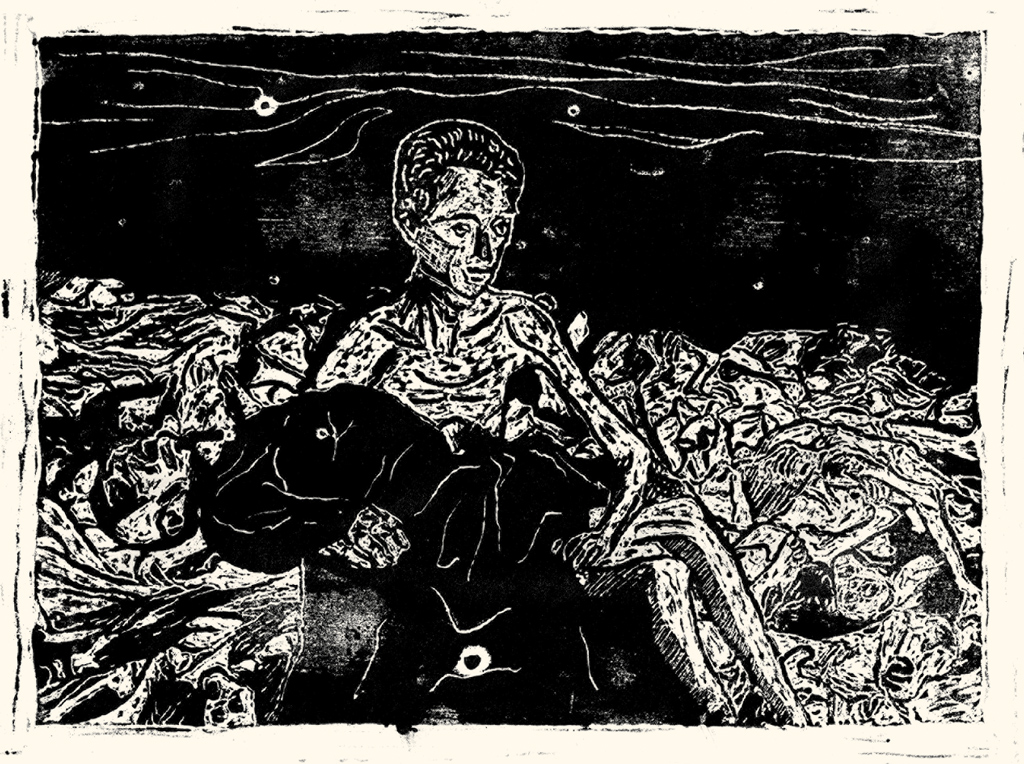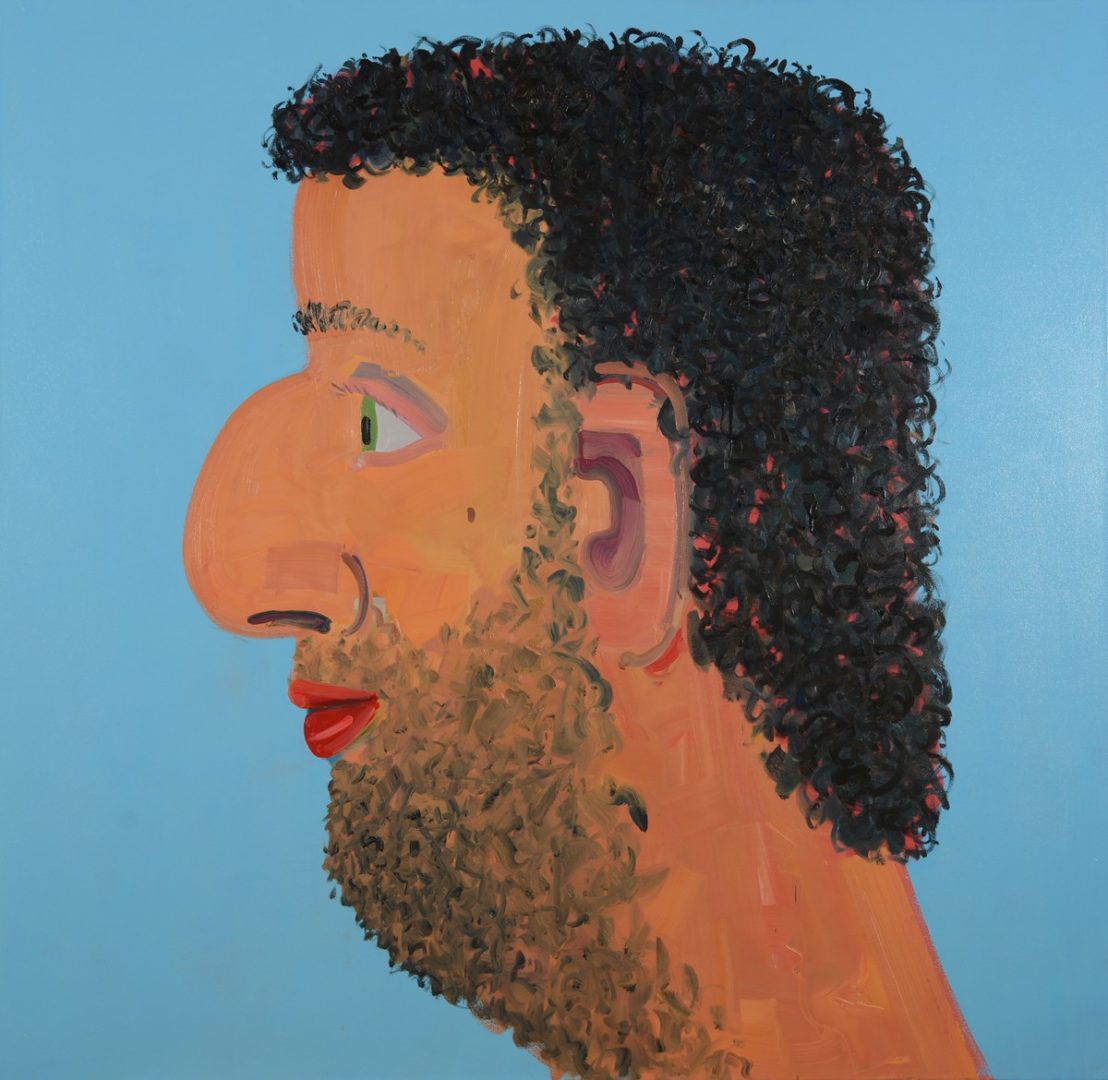
Charlotte Delbo: “After stripping, we entered a room where a female prisoner cut our hair, very close to the skull. Another one sheared our pubic hair. A third smeared our heads and our pubic hair with a rag dipped in a bucket of oil. To disinfect us.”1
Primo Levi: “Four men with razors, soap-brushes, and clippers burst in; they have trousers and jackets with stripes, with a number sewn down the front . . . they catch hold of us and in a moment we find ourselves shaved and sheared. What comic faces we have without hair!“2
Charlotte Delbo: “I looked for my friends and didn’t recognize anyone. Naked and shorn, no one was herself anymore.”3
All stories of survivors of Auschwitz, with varying degrees of talent, describe the same story: the journey, the arrival at the ramp, the ritual of entering the camp. You were forced to strip, young and not so young mixed together, then submit to shaving (“I hadn’t any body hair whatsoever, yet I was shaven all over. It all happened at once: shorn and shaved.”4), and finally the tattooing of the left forearm. Three practically simultaneous operations, indissociable, that wipe out humanity.
Ruth Kluger: “Enforced nakedness (…) is the dispossession of the self, the loss of identity. The person who undresses of his own volition says: I am doing what I want, or even, I could care less what you think. It is a stronger affirmation of self. A person forced to show her or himself naked gradually loses possession of the self. Nakedness in itself is neutral; it’s the context that matters. And strangely, that applies to both sexes.”5
Primo Levi: “Consider if this is a woman Without hair and without name”6
Certainly there was a semblance of rationality in the shaving as well as in tattooing the number. The former was also meant to hinder lice, which carried typhus that knew no boundary between the Nazis guarding the camps and their victims; the latter was introduced to make it possible to rapidly identify the plethora of corpses when the prisoners of the Auschwitz camps ─ Polish, Soviet, Jewish ─ were incinerated. Yet these operations were solely seen as the Nazi will to dehumanize victims. To escape from them was to maintain one’s humanity. Charlotte Delbo describes the deportation of her friend Danielle Casanova. “In Birkenau, while we waited to be undressed, shorn and tattooed, an SS officer asked if there was a dentist among us. Danielle stepped forward. They sent her directly to registration. They tattooed her but did not cut her hair.” Despite conditions that should have ensured her survival, Danielle Casanova succumbed to typhus on May 9, 1943. “She lay there, beautiful as she wasn’t skinny, her face framed by her mane of black hair (…). The only beautiful corpse people ever saw at Birkenau.”7
Throughout the accounts, hair and pubic hair are sometimes described again. For, inevitably, they both grow back. Charlotte Delbo remembers taking a break near a stream, when a Kapo gave her companions and herself permission to wash themselves: “The pubic hair, which was shorn upon our arrival, had grown back. It was all stuck together with diarrhea and I had difficulty untangling it. Had I been able to restore it to its length and its curls I would have really felt clean, but it would have required hours of soaking. I rubbed, rubbed, even scratching myself, without succeeding.”8
The last time Charlotte saw Viva (Vittoria Daubeuf, née Nenni, one of the four daughters of the socialist leader), dying, she remembers: “Without her curls, I wouldn’t have recognized her. How her hair had grown! What a long time Viva must have been suffering,” and “The following morning, at roll call, Viva passed by on the little stretcher, her feet extending past it, and her head hanging between the shafts of the little stretcher. And perhaps one of the people standing at roll call (…), perhaps one of them said, seeing Viva’s beautiful black curls: ‘She held on a long time, that one.’ An entire winter, an entire spring
1.Charlotte Delbo, Le convoi du 24 janvier, Éditions de Minuit, 1965, p. 13. Thanks to Claude-Alice Peyrottes who is familiar with all of Charlotte Delbo’s work and directed me to the passages where she mentions hair.
Back to the text
2. Primo Levi, If This Is a Man; Remembering Auschwitz, translated from the Italian by Stuart Woolf; New York, Touchstone, 1996, 22-24.
Back to the text
3. Le convoi. id.
Back to the text
4. Henri Borlant, “Merci d’avoir survécu,” Seuil, 2011, 84.
Back to the text
5. Ruth Kluger, Refus de témoigner. Une jeunesse, translated from the German by Jeanne Etoré, Viviane Hamy, 1997 for the French translation, 157.
Back to the text
6. Primo Levi, If This Is a Man, op. cit., 11.
Back to the text
7. Charlotte Delbo, Le convoi, op. cit., 62-63.
Back to the text
8. Charlotte Delbo, Le convoi, op. cit., 62-63.
Back to the text
9. ibidem, 66-67.
Back to the text
Translated by Jonathan Kaplansky
Note: English translations from the French by the translator of this article, with the exception of the translations of Primo Levi.
